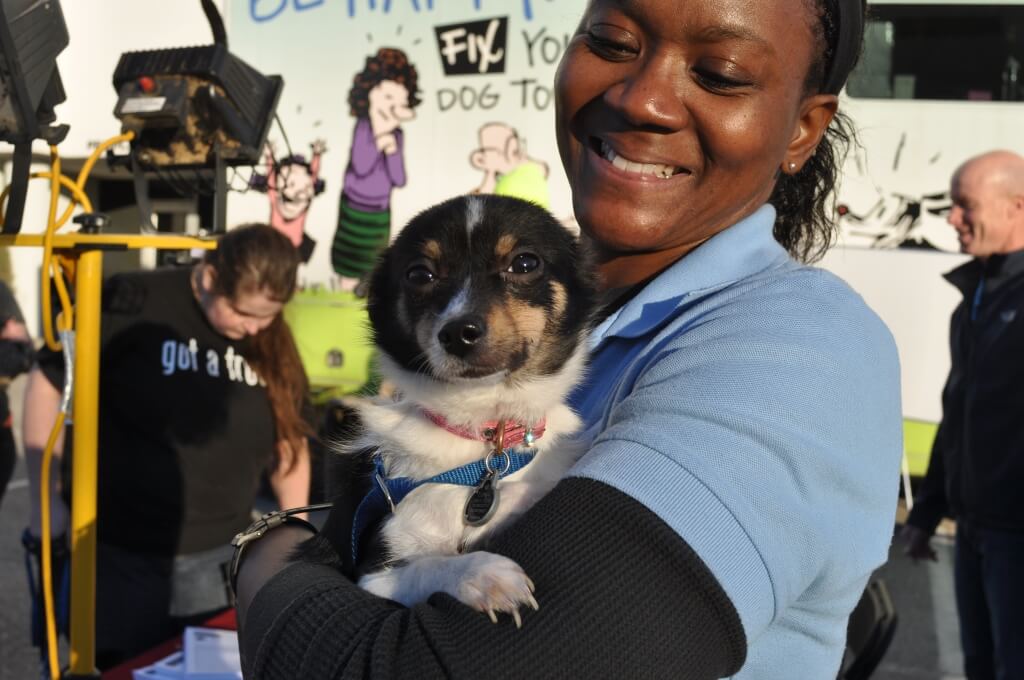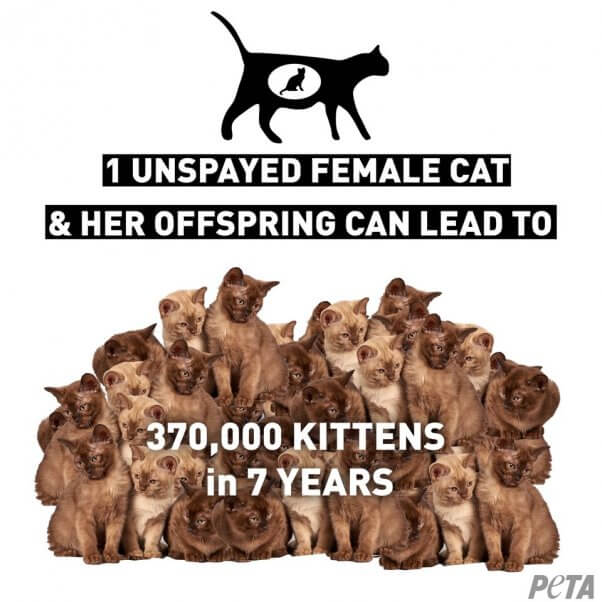Where Do Animals Shelters Get There Animals From
Dogs, cats, rabbits, and other domesticated animals rely on the care of devoted homo guardians to keep them rubber, happy, and healthy. Some of these animals are lucky enough to be adopted into responsible, permanent homes. Sadly, in that location are far more than animals in demand of a caring family unit than at that place are people willing or able to provide them with a lifetime of love and support. Every year in the U.S., more than 6 million lost, abandoned, abused, or unwanted dogs and cats enter animal shelters.
What Is an Animal Shelter?
An animal shelter is a staffed facility where homeless animals—and animals seized by authorities in cruelty cases—find prophylactic and condolement, are cared for, and are made bachelor for adoption. Temporarily housing animals in shelters keeps them from existence loose on the streets, where they struggle to detect clean nutrient and h2o, can be striking past cars, can exist attacked by other animals or cruel humans, or face other potential dangers.

Animal shelters vary profoundly—by size, purpose, capacity, and their handling of the animals in their charge. They may be operated by the government, a local humane gild, individual individuals, or a combination of these. Some are funded by donations lonely, while others receive tax money.
Dogs, cats, and all animals are individuals, not holding, which is why they should never be bought from pet stores, websites, or breeders. At reputable animal shelters, animals are spayed or neutered earlier they're adopted so equally not to add to the brute overpopulation crisis.

What Do Creature Shelters Do?
At professionally run facilities, frightened animals are reassured, sick and injured animals receive handling or a peaceful end to their suffering, and the animals' living quarters are kept clean and dry.
Reputable animate being shelters typically have many of the following:
- A compassionate trained staff (plus volunteers) to intendance for animals
- A ill ward and isolation area for animals who may be sick
- A pre-adoption habitation check and follow-upwardly program
- A humane method of euthanasia, usually an intravenous injection of sodium pentobarbital, administered past well-trained, gentle staff members
- A policy against giving or selling animals to laboratories or to be used as guard dogs
- Cruelty investigators
- A veterinarian on phone call 24 hours a day
- Indoor/outdoor dog runs
- A big, sunny cat room with raised perches for sitting and individual cages for cats who must be confined
- A quiet room for adopters to run across and get to know animals
- An agile public instruction plan to teach children and adults to intendance for animals properly
- A spay/neuter program that ensures all animals are sterilized at the time of adoption or that guarantees all adopted animals will be sterilized later
- A policy of property lost and stray animals for a minimum of v days, including at to the lowest degree one Saturday
Are At that place Different Types of Creature Shelters?
Not all animal shelters are the aforementioned. Fortunate homeless and unwanted animals end upwards in a traditional, high-intake open up-access brute shelter staffed by professional, caring people.
Many less fortunate animals end up in pitiful kennels that are zip more than severely crowded shacks without walls or other protection from the elements, where animals are often left to dice from exposure, disease, or fights with other animals.
Some shelters promote unsafe "no-kill" policies, which, ironically, don't preclude animals from dying. They simply leave animals to dice elsewhere—and often miserably. Facilities that adhere to these policies try not to involve themselves in euthanasia past turning away animals in demand, shipping animals out of state to unknown and often untraceable destinations, or warehousing animals in cages indefinitely. "No-kill" shelters frequently prioritize the appearance of their "salve rates" in a higher place the needs of animals in their accuse.
Practise Beast Shelters Kill Animals?
No shelter that truly cares for animals should always turn its back on an brute in need, even when that ways taking in animals who are diseased, badly injured, aggressive, elderly, or dying. These animals have little to no take a chance of being adopted or helped by anyone else, but a responsible animal shelter should at least provide them with a painless release.
To be able to offer refuge to every animal in need, open-admission shelters must euthanize unadopted and unadoptable animals. The culling—turning them away—is vicious and leaves the animals in grave danger.
'No-Kill' vs. Socially Witting Fauna Shelters
"No-kill" shelters have the luxury of euthanizing fewer animals considering they turn away needy ones they deem unadoptable. Because they're near constantly "total," most all "no-kill" organizations keep waiting lists, which compromise animals' condom by leaving them in situations in which they're clearly unwanted. Where do these unwanted animals get? The lucky ones will be taken to clean, socially conscious facilities that have responsible policies near euthanasia and adoption.
Many animals turned away from "no-kill" facilities are dumped on the road, in the woods, or in the yard of a local creature hoarder. Some don't even make information technology out of the brute shelter'due south parking lot.
Animals whoare accustomed into "no-kill" shelters may exist warehoused in cages for months, years, or fifty-fifty the rest of their lives, becoming more withdrawn, depressed, or ambitious every day—further reducing their chances of adoption.
Socially witting animal shelters accept every dog, true cat, bird, rabbit, hamster, rat, and any other animal who comes through their doors. They don't pick and choose, accepting only the young, healthy, behaviorally sound animals who might be quickly adopted, every bit "no-impale" shelters often practise. They pledge to assist every creature in demand, fifty-fifty when the best that they tin offer is a painless release.
What Is the Difference Between an Animal Shelter and a 'Rescue?'
Many sham operations use the word " rescue " to fool empathetic people into believing that they're helping animals escape from cruel conditions. In reality, many self-professed rescue outfits are the site of horrific cruelty to animals.
Through online fundraisers, some "rescue" groups collect tens of thousands of dollars to nourish breeder auctions under the guise of saving dogs from puppy mills. These groups can then sell dogs for exorbitant fees to buyers who desire a specific breed. Just breeders admit that they're selling the dogs they no longer intend to employ—and that since "rescuers" will pay practically any price they name, they utilise the funds to proceed breeding dogs to sell. Such "puppy mill rescue" scams were previously exposed by The Washington Post.
How Many Animals Are Euthanized in Shelters Each Year?
Roughly half of the half-dozen to 8 meg animals who enter shelters each year—many of them healthy, young, and adoptable—must exist euthanized because of elementary math: There are too many animals and not enough worthy adoptive homes. No one wants to run across animals euthanized—least of all, the shelter workers who have to take activity to accost gild'southward irresponsibility—but denying that an overpopulation crisis exists or blaming those who accept devoted their lives to ending information technology is misguided and solves nothing. Warehousing companion animals in barren cages for long periods leaves animals to endure a far worse fate.
Why Are In that location Then Many Unwanted Cats and Dogs?
In that location are three primary reasons. Many owners fail to spay or neuter their dogs and cats, who so reproduce, potentially creating enormous numbers of kittens and puppies. People still buy animals from breeders or pet stores (thereby supporting the puppy mills that supply them) instead of adopting homeless animals from shelters. And people larn companion animals without considering the lifetime commitment that caring for them requires. Somewhen, owners turn their backs on their loyal companions when they become "inconvenient" or "too much work."

Why Are Animal Shelters Important?
They provide animals with food, h2o, and medical care; protection from the elements; relief from suffering; and a caring human presence. Many times, these animals would have nowhere else to plow.
Socially conscious animal shelters provide a humane culling to supporting the roughshod pet trade with your money. Always adopt—don't shop!
Important Things to Consider Before Adopting a 'Pet'
Adopting an beast companion ways making a long-term commitment to treat and spend time with the animal for his or her entire life. Before adopting, consider the time and money involved in proper fauna intendance. Will someone take the fourth dimension and patience to practise and train the animal? Is someone prepared to pay for food, accessories (such as toys, grooming supplies, leashes and harnesses, and bedding), inoculations, and veterinary care, including spaying or neutering, flea treatment, deworming, and emergency care? Can someone provide for the fauna in case of your absence?
If a family decides to adopt an animal, every family fellow member should go to the local shelter together to cull the brute, after the obligations and long-term commitments involved accept been carefully considered. Information technology'southward likewise necessary to be aware of local, state, and federal regulations that govern animal "ownership." Most communities require annual licensing for dogs and cats, and many require that animals be on the custodian's property at all times and that they be spayed or neutered.

What You lot Can Practice
Finding a home for 1 domestic dog or cat is a wonderful thing, but sterilizing one dog or cat volition potentially spare hundreds (if not thousands) of animals suffering and decease past preventing generations of puppies and kittens from being born. Getting spay/neuter laws passed saves even more than lives.
Stopping the problem at its source is where our fourth dimension, energy, and funds are needed most. That's how nosotros tin can drastically reduce—and hopefully stop—the homeless-animal crisis and the demand for euthanasia because of overpopulation.
Please support socially witting open-access shelters and aid stop the need to euthanize animals for lack of expert homes past having your animals spayed or neutered and by urging anybody you know to do the aforementioned.
Share on Facebook
Share on Twitter
Source: https://www.peta.org/features/animal-shelters/
Posted by: lomaxbuting.blogspot.com

0 Response to "Where Do Animals Shelters Get There Animals From"
Post a Comment